Did Google's AI fool you?
Three ways to find out yourself
Google has made AI detection for fake images available to everyone (it introduced SynthID today) — but the way you ask the question determines what answer you get.
Upload a photo to Gemini and ask naturally, you get detailed percentages about which parts were AI-edited. Use the @SynthID extension with the same image, you get a vague one-liner. Both are free and public, but they give you completely different levels of detail from the same watermark technology. And wait, there is even a third method.
Method 1: Natural Language Query in Gemini
Prompt: “is this fake ai”
Response:
“The image has been edited with AI” + full explination
Google SynthID Detection: A digital watermark confirms that part of the content (less than 25% of the image) was generated by Google AI. This usually indicates that a specific object was added or modified using a tool like Magic Editor.”
What I got: Specific percentage (less than 25%), clear explanation of edit type (object insertion/modification), identification of probable tool (Magic Editor), actionable intelligence for verification.Upload a photo to Gemini and ask naturally, you get detailed percentages about which parts were AI-edited and a long description of other details.
Method 2: The @SynthID Extension in Gemini
Same image, using @SynthID tag
Response:
“All or part of the content in this image was generated with Google AI.”
What I got: One sentence. No percentages. No indication which parts. No context about manipulation type. Just binary confirmation that Google’s watermark exists somewhere.
For a journalist on deadline trying to write accurately about what was manipulated, this tells you almost nothing useful.
Method 3: SynthID Detector Portal (Not Public—Waitlist Only)
The full DeepMind tool for professionals
Upload a file without any prompt
Response:
Visual heatmap overlay with color-coded regions:
Blue squares: SynthID watermark detected
Gray squares: Unsure/ambiguous
Yellow/orange squares: No watermark detected
“Made with Google AI”
“SynthID confidence: High”
Google watermarked over 20 billion pieces of content across these formats:
Text (via Gemini)
Images (via Imagen)
Video (via Veo)
Audio (via Lyria and NotebookLM)
What about detecting AI audio and video?
This is where it gets messy. Google’s public tools (both the natural language queries and @SynthID) sometimes flag fake audio by analyzing anomalies—unnatural speech patterns, artifacts, inconsistencies—rather than detecting the actual SynthID watermark. It’s not reliable. It’s hit-or-miss. And Google doesn’t clearly explain when they’re using watermark detection versus anomaly analysis.
So you might upload a suspicious audio clip , generated by Google Notebook LM and get:
“This appears to be AI-generated” (based on anomalies, not watermark)
Or: “Cannot detect watermark” (doesn’t mean it’s authentic)
Or: No clear answer at all
For actual SynthID watermark detection in video and audio, you need access to the Deepmind portal—which isn’t public yet.
I’m excited that Google has made SynthID AI detection for images available! They reached out to me about it a few months back and offered me early access if I could chat with an employee first and listen to the Demo.
I was told that text, video, and audio AI detection of Google AI will be rolled out later, but I haven’t received any specific timeline.
What other companies are doing
OpenAI: Built it, tested it, abandoned it
OpenAI spent nearly a year developing text watermarking for ChatGPT:
It was 99.9% effective at detecting ChatGPT text. It worked against paraphrasing and light editing. It was technically ready to launch. Why didn’t they?
Internal surveys found 30% of ChatGPT users would use the service less—or switch to competitors—if watermarking was implemented. That’s a massive revenue risk.
OpenAI chose user retention over verification capability. They sent a clear message to the industry: watermarking threatens your user base. Don’t be first.
What OpenAI offers for free public detection:
Text: Nothing (they shut down their AI text classifier in 2023 due to “low accuracy”)
Images (DALL-E 3): C2PA metadata (easily stripped) + visible “ImageGen” label for free users
Public detection tool: None
Meta: Visible labels, no verification
Meta took the simplest approach:
Slap visible “Made with AI” labels directly on AI-generated images
Provide no tool to detect Meta AI content once labels are removed or screenshots taken
Free public detection tool: None
This is transparency theater—visible enough to satisfy regulators, useless once content is reposted or shared.
Anthropic (Claude): Nothing
No watermarking for text
No watermarking for images
No detection tools
No public plans
Anthropic has never claimed to solve this problem, but as a major AI provider, their absence is notable.
Microsoft: Enterprise only
Microsoft has watermarking via Azure OpenAI Service following C2PA standards.
The catch: Only available to paying enterprise customers. Consumer Copilot users? No public verification tool.
Why there’s no industry standard (hint: it’s not technical)
You’d think AI companies would collaborate on universal watermarking. Verification benefits everyone, right?
Wrong. Here’s why we’re stuck. OpenAI proved that users actively resist watermarking. 30% threatened to leave. No company wants to be first to lose users by implementing unpopular tracking.
If you can only verify Google AI with Google’s tools, that’s vendor lock-in disguised as transparency. Why would Google help you trust OpenAI’s products?
Publishing how detection works helps bad actors defeat it. Keeping it secret prevents independent verification. Every company chooses opacity.
The Coalition for Content Provenance and Authenticity (C2PA) created standards for metadata and content credentials. But C2PA focuses on metadata attached to files, while SynthID embeds watermarks in the content itself.
Different approaches. Different standards. And C2PA metadata is easily stripped—copy an image, screenshot it, or compress through social media, and it’s gone.
The EU AI Act requires “some form” of labeling. But requirements are vague enough that companies can comply with minimal, incompatible implementations.
Until regulators demand interoperability—not just “some kind of marking”—we’re stuck with vendor-specific solutions.
What I really want: A universal AI detection API that works across ALL AI companies.
Imagine: one open API where developers could build verification tools that detect content from Google, OpenAI, Meta, Anthropic—anyone. Upload any AI-generated content, get a definitive answer about its origin, regardless of which company made it.
That’s the infrastructure we need. One standard. One API. Universal detection.
Instead? Every company builds proprietary systems that only detect their own content. Verification stays locked in corporate silos.
The technology exists. The political will doesn’t.
Until then, your verification skills matter more than any detection tool.
Resources:
https://gemini.google.com
SynthID Detector Portal: https://deepmind.google/technologies/synthid/synthid-detector/ (waitlist)
C2PA Inspector: https://contentcredentials.org/verify
Check out my little experiment http://www.imagewhisperer.org and help me to improve it :)
Read my not so little free guide about AI detection https://gijn.org/resource/guide-detecting-ai-generated-content/
Based on hands-on testing with both public and non-public Google interfaces. Screenshots show actual responses from the same image.



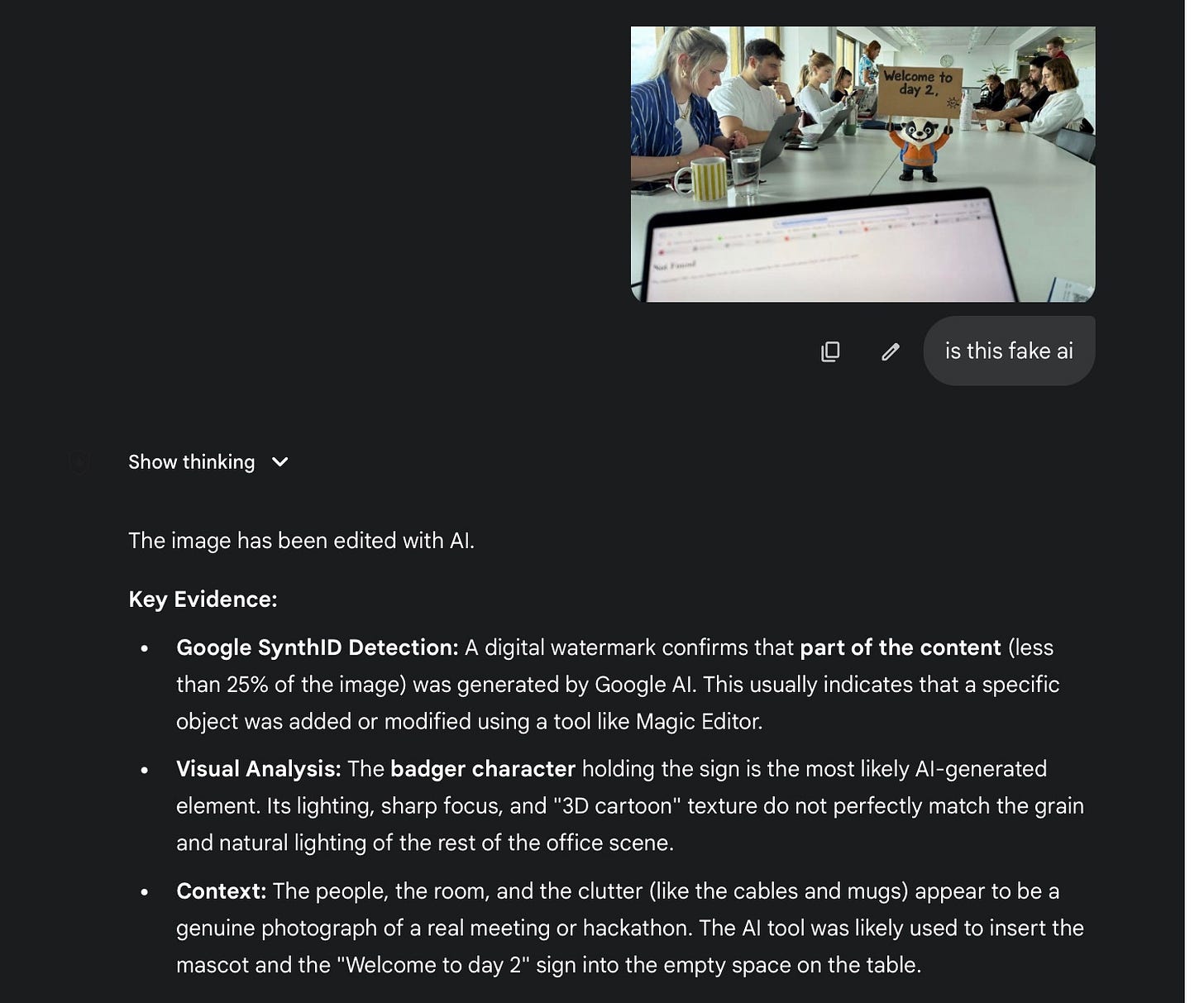
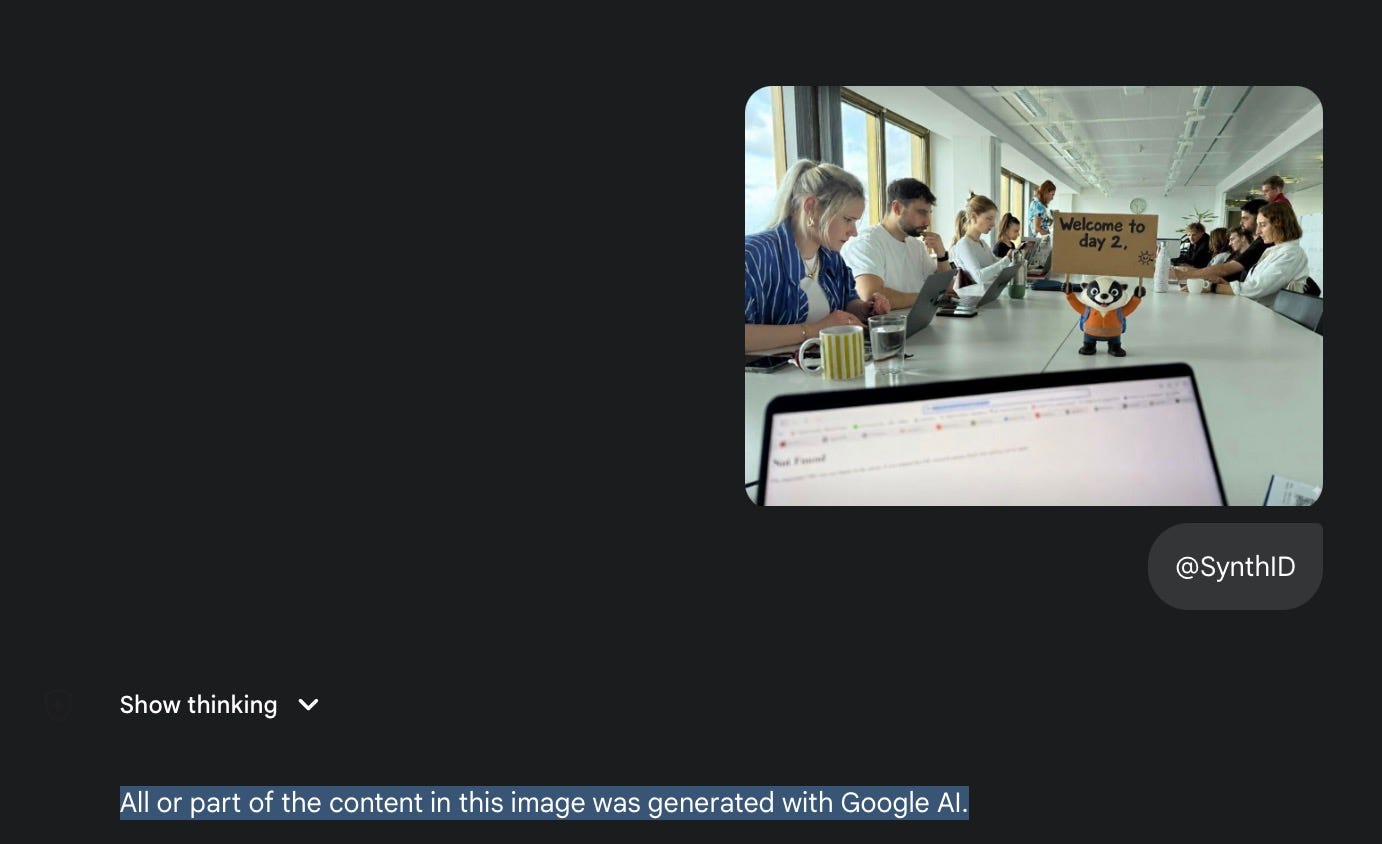

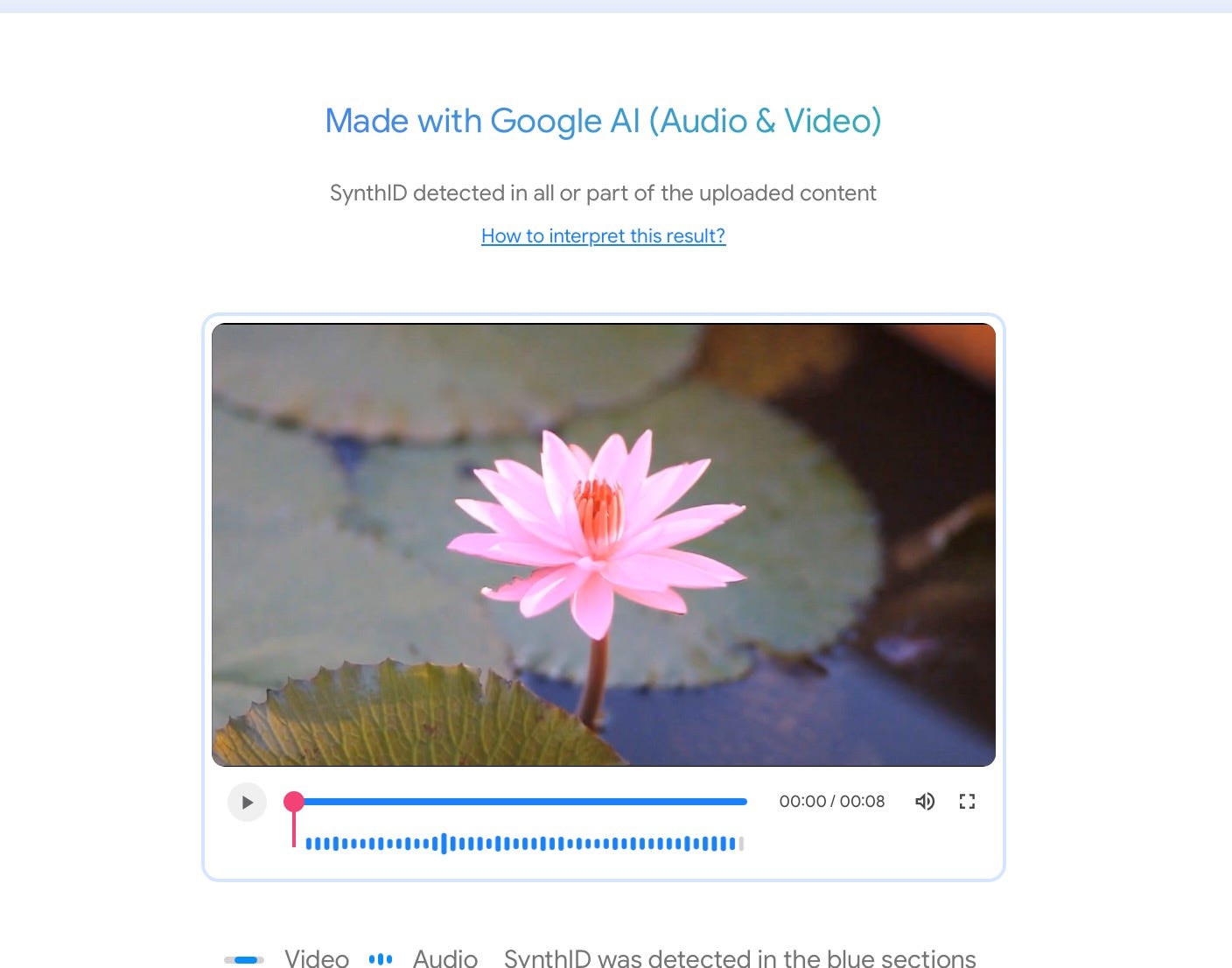
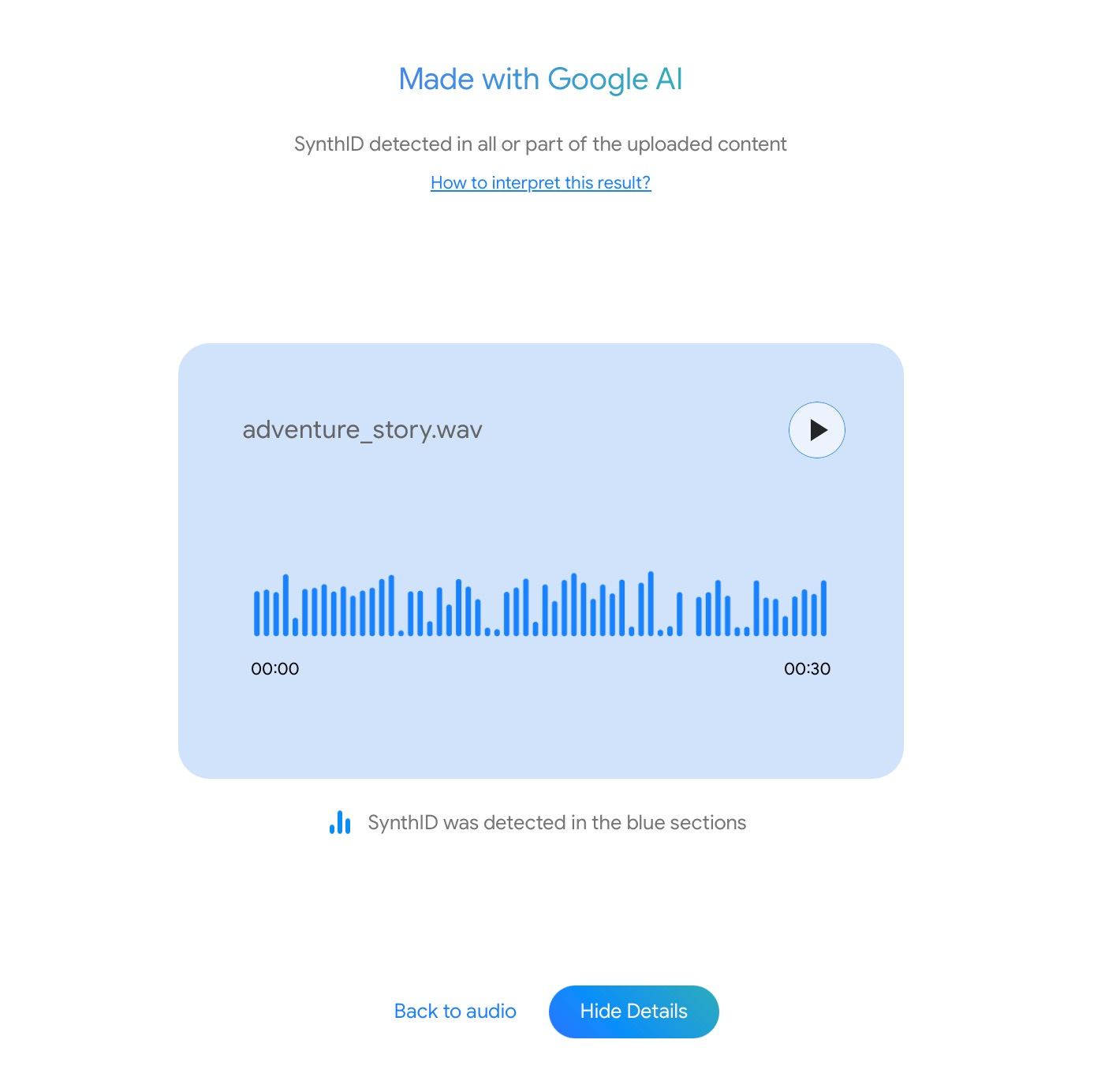
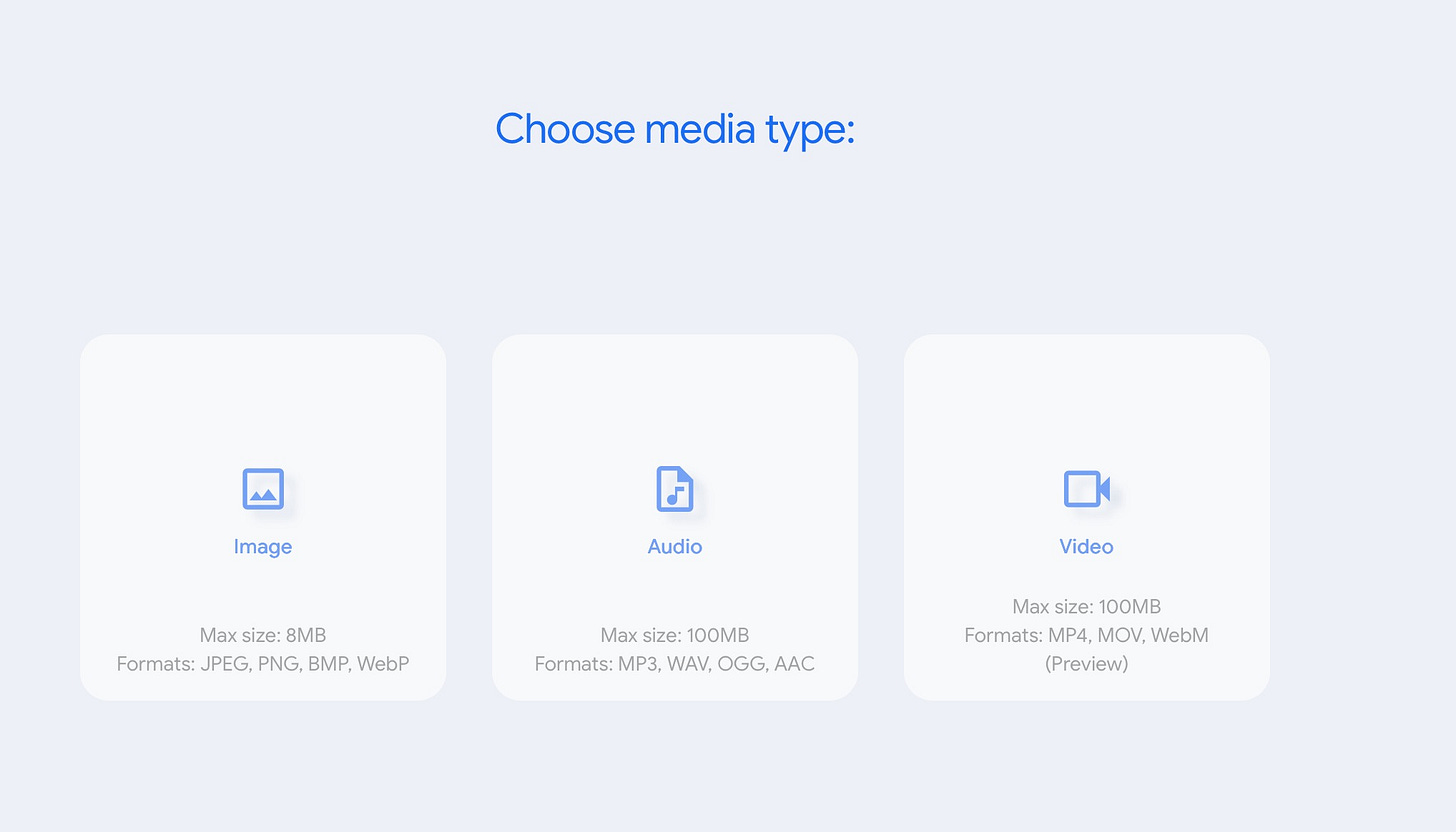
The discrepency between the natural language query and the @SynthID extension is wild. Getting granular percentages vs a vague one liner from the same tech shows how much friction companies build into verificaton even when they claim transparancy. The OpenAI finding is particularly telling, 30% of users threatning to leave if watermarking was implemented basicly killed any chance of industrywide adoption.